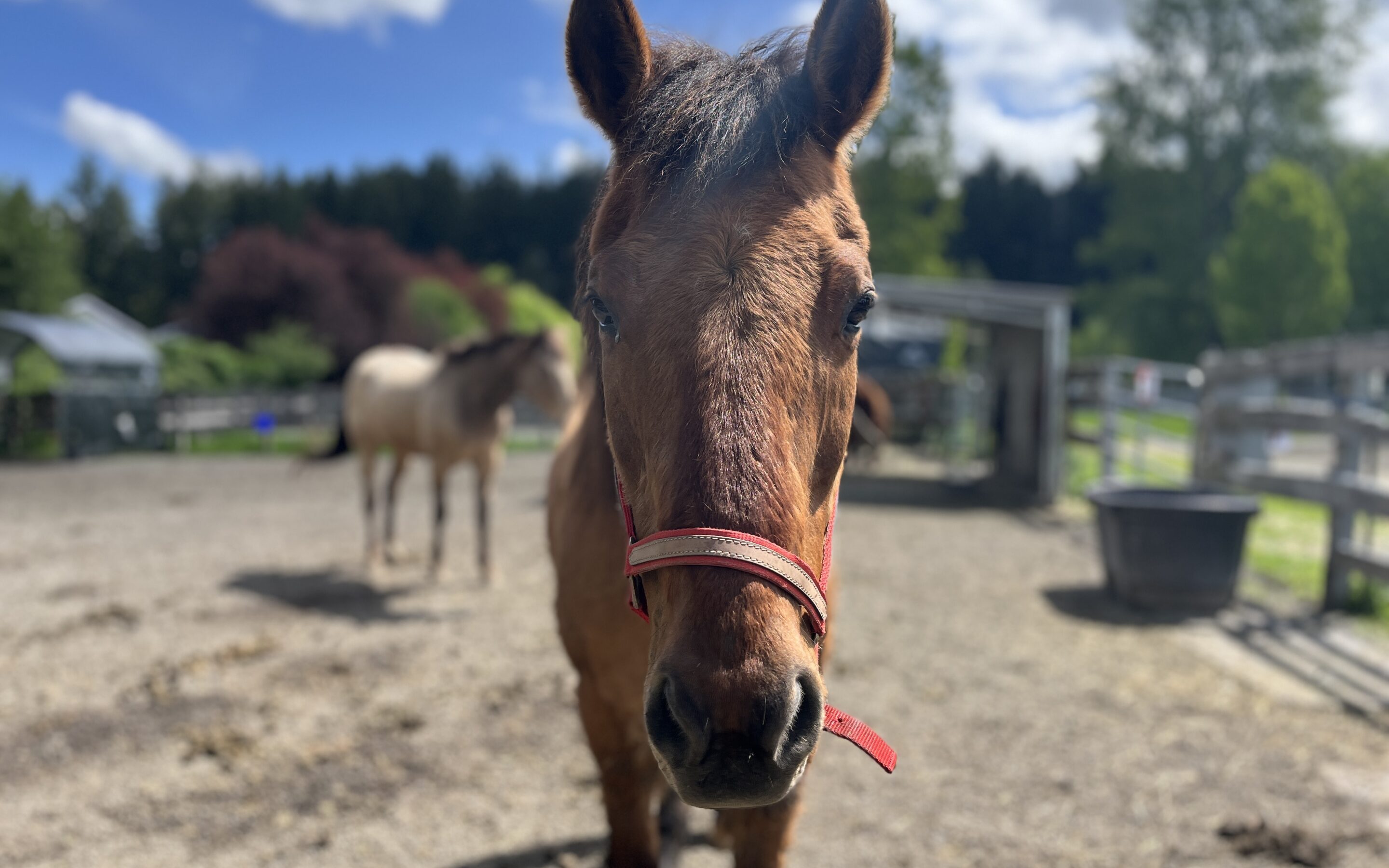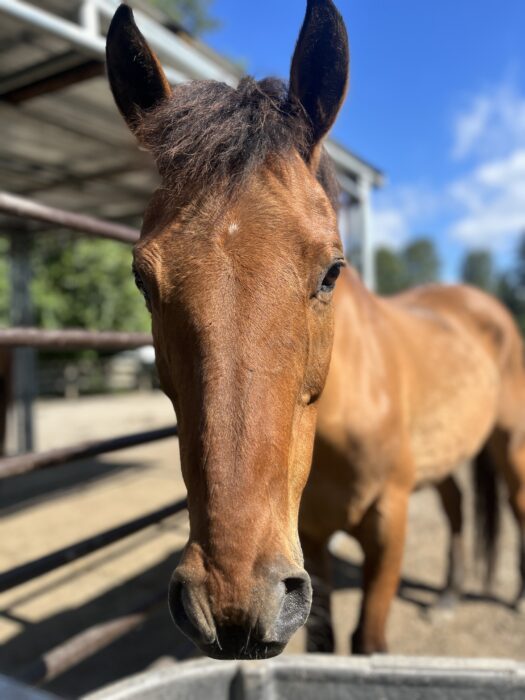Meadow was one of the 7 Gig Harbor horses who came to SAFE in May. Likely the oldest of the group, she was believed to be somewhere in her 20s. She was the most gentle of all the horses on the property, allowing us to halter her from day one, and give her a nice thorough brushing as soon as she arrived at SAFE. Unfortunately, a little less than a month into her stay here, Meadow suffered from a long-term colic, and we made the informed decision to euthanize. During her time at SAFE, Meadow knew nothing but clean water, dry ground, consistent feedings, and a lot of people who cared very much about her well being. She allowed us to help her up until the very end, when she showed us very clearly that she was done with her fight, a fight that looked like this:
We had our vets out multiple times, where they tubed her with fluids, and had her scoped for ulcers a few days in. In this scope, we found her stomach to be full of hay – an amount equal to if she had had a full breakfast that morning, despite not having eaten for a good two days. The scope also did reveal some small ulcers. But despite her full stomach and her still gurgling digestive tract, she was only passing a small amount of completely liquid manure about once a day. Our vets worked alongside us tirelessly to provide her with relief. We gave her banamine twice a day, we administered gastrogard and sucralfate for the ulcers. We watched her through the night on our camera to check that things weren’t worsening. We offered her mashes, and trotted her out to try and get her motility back. We tried grazing her, and even giving her some hay when her interest in grain declined. We started her on metronidazole to help try and firm up the loose stool she was having. But despite our best efforts, we weren’t seeing any real improvement.
A week later, her heart rate was elevated for the first time since this all began. Banamine brought it down a little, but not a lot. She was also beginning to show a less agreeable side, not wanting us to approach her, pinning her ears and showing us her teeth when we tried to halter her. This was perhaps always something that was in there, but during this whole time, she had been the perfect patient, letting us give her medications both orally and rectally, standing well for vet checks and blood draws, and putting up with a whole lot of handling that we had not previously prepared her for. This shift in her demeanor was troubling, because it meant that going forward, we would not be able to as readily help her out.
The next morning, she was spending the majority of her time lying down. Not thrashing or rolling, but clearly there had been some kind of change in her level of comfort. She was also not as interested in eating the things that had been whetting her appetite – hay and grass.
Dr. Lewis came out, and found that her heart rate was still elevated. She was still difficult to handle, and with a pain level that seemed to be increasing, we decided that the kindest thing to do for Meadow would be to free her from her pain and let her go peacefully.
We did not know Meadow for long, but in the time we spent with her we knew a sweet mare who let us help her until she was ready to say goodbye. I am so thankful that she was able to be at SAFE at her end, where we were able to make the decision to keep her from further pain, and where she could be laid to rest on soft, dry ground surrounded by love. Her friends were able to witness her passing, which was easy and peaceful. I’d like to think she’s become one with her namesake, frolicking pain-free.



